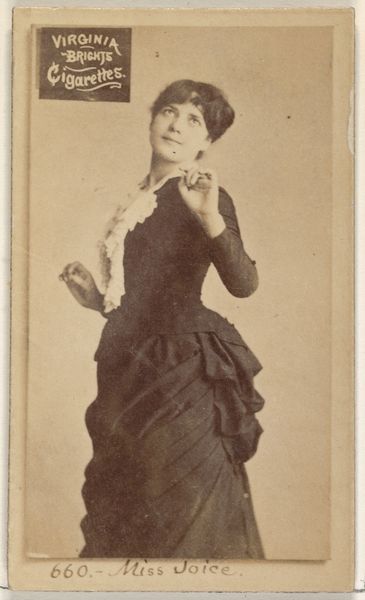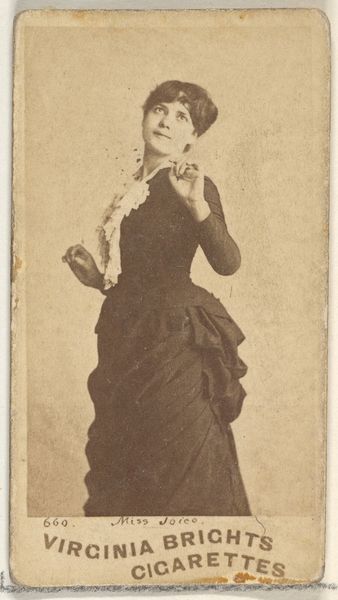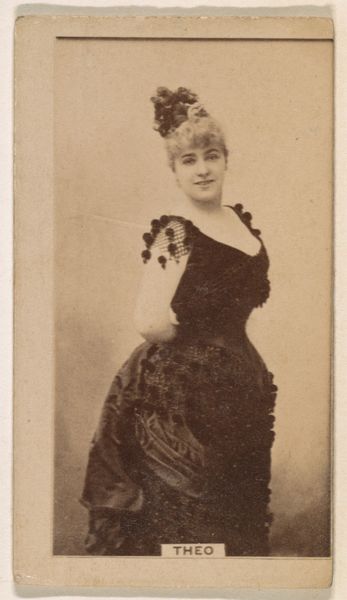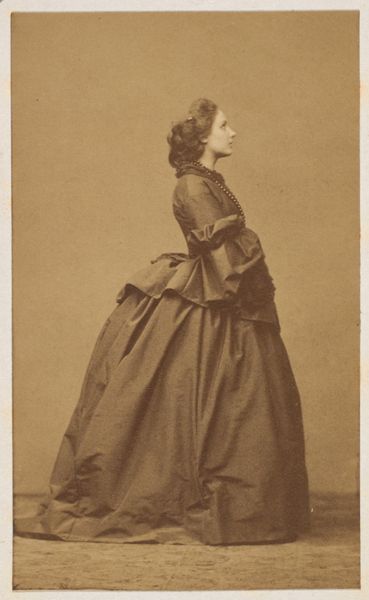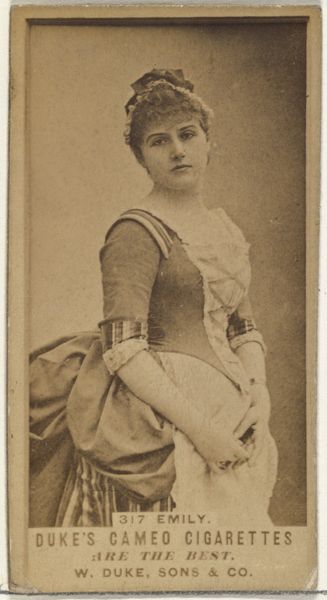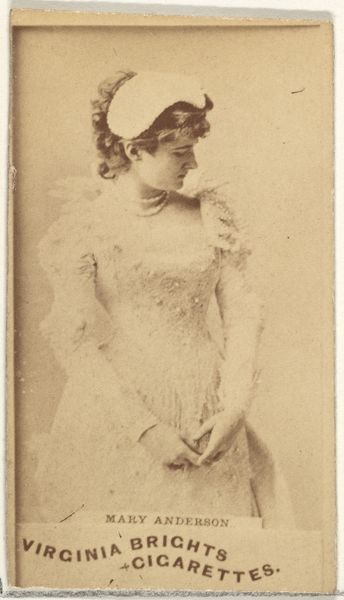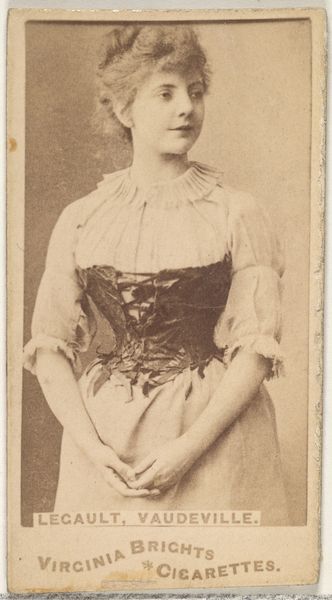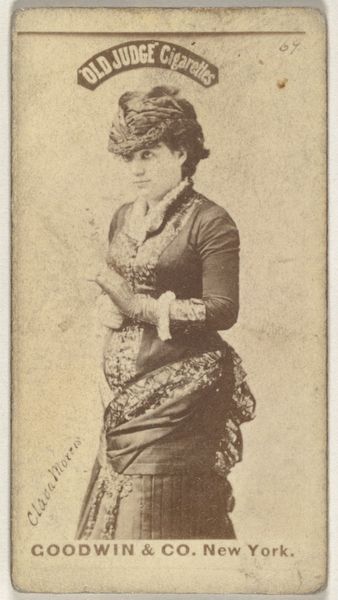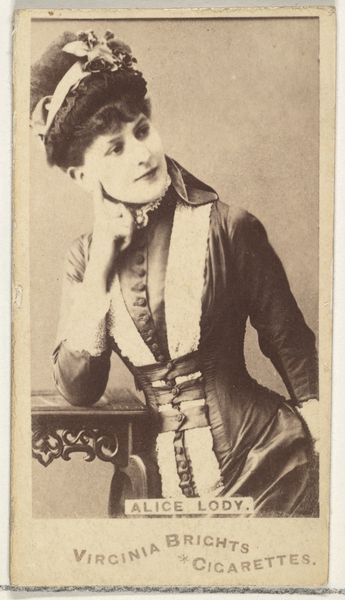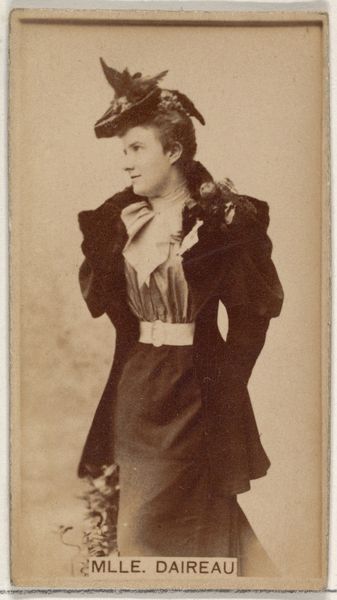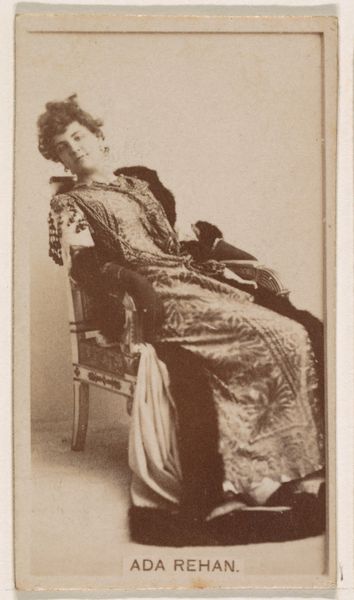
Card 834, Miss Joice, from the Actors and Actresses series (N45, Type 2) for Virginia Brights Cigarettes 1885 - 1891
0:00
0:00
drawing, print, photography
#
portrait
#
drawing
# print
#
impressionism
#
photography
#
19th century
Dimensions: Sheet: 2 3/4 x 1 3/8 in. (7 x 3.5 cm)
Copyright: Public Domain
Editor: This is "Card 834, Miss Joice," part of the "Actors and Actresses" series made for Virginia Brights Cigarettes sometime between 1885 and 1891 by Allen & Ginter. It's a photograph, a very small one, really, almost intimate. The actress seems to be in deep thought, almost melancholic. What can you tell me about this piece? Curator: Well, let’s consider the context. These cards, mass-produced for cigarette packs, were a form of early advertising and also, interestingly, a way to circulate images of women – specifically actresses – into the public sphere. What does it mean to have women’s images commodified in this way, associated with a product that has its own set of cultural meanings around gender and class? Editor: It's strange to think of an actress promoting cigarettes like this. Were these cards popular? Curator: Hugely. They became collectible, sparking a craze. Now, think about the male gaze operating here. The way Miss Joice is posed, the soft lighting, it all speaks to a certain idealized vision of femininity designed to appeal to male consumers. What implications might this have had for the agency of actresses during that period? Editor: It makes me wonder if she had control over the image that was presented. Were these images contributing to the limited roles available to women at the time? Curator: Precisely. These cards participated in a broader system that constructed and constrained female identity. Consider, too, the fleeting nature of these images. Tossed away with the cigarette pack, these images are rendered disposable, reflecting a certain cultural attitude towards women in the performance industry. Editor: I hadn't considered all those layers before. It's more than just a pretty picture. Curator: Exactly. Examining these artifacts through an intersectional lens reveals the complex dynamics of gender, commerce, and representation operating in the late 19th century. Editor: Thank you. It really gives a lot to think about!
Comments
No comments
Be the first to comment and join the conversation on the ultimate creative platform.
